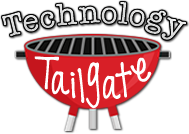 Many educators have a common misconception of “what is” technology integration. Often educators are expected to integrate technology without having a definitive concept of the working definition. According to EdTech Connect, (1999):
Many educators have a common misconception of “what is” technology integration. Often educators are expected to integrate technology without having a definitive concept of the working definition. According to EdTech Connect, (1999):“Technology integration is the process of teaching technology (technology education) and another curricular area simultaneously. In addition, it is the process of using technology to enhance teaching for learning (educational technology). Technology integration is not about purchasing/selecting the "right" piece of hardware and software; but rather using technology to enhance student learning.”
Integration is not the placing of computers in the classroom with educators whom lack training; or the creating of learning modules that are not content–curricula specific. Furthermore, integration should not be seen as a “filler” or a split from the learning objectives – although it should allow the curriculum to drive technology usage, in lieu of having technology drive the curriculum (Dockstader, 1999).
Technology integration involves purpose, collaboration, and enhances the student learning which both supports and extends the curriculum objectives. It allows the student to advance beyond knowledge and comprehensive learning, to one of application/analysis of information.
~~~~~~~~~~~~~~~~~~~~~~~~~~~~~~~~~~~~~~~~~~~~~~~~~~
Kids in Charge of their own learning? Find out HOW in Techie-Bytes next posting!








